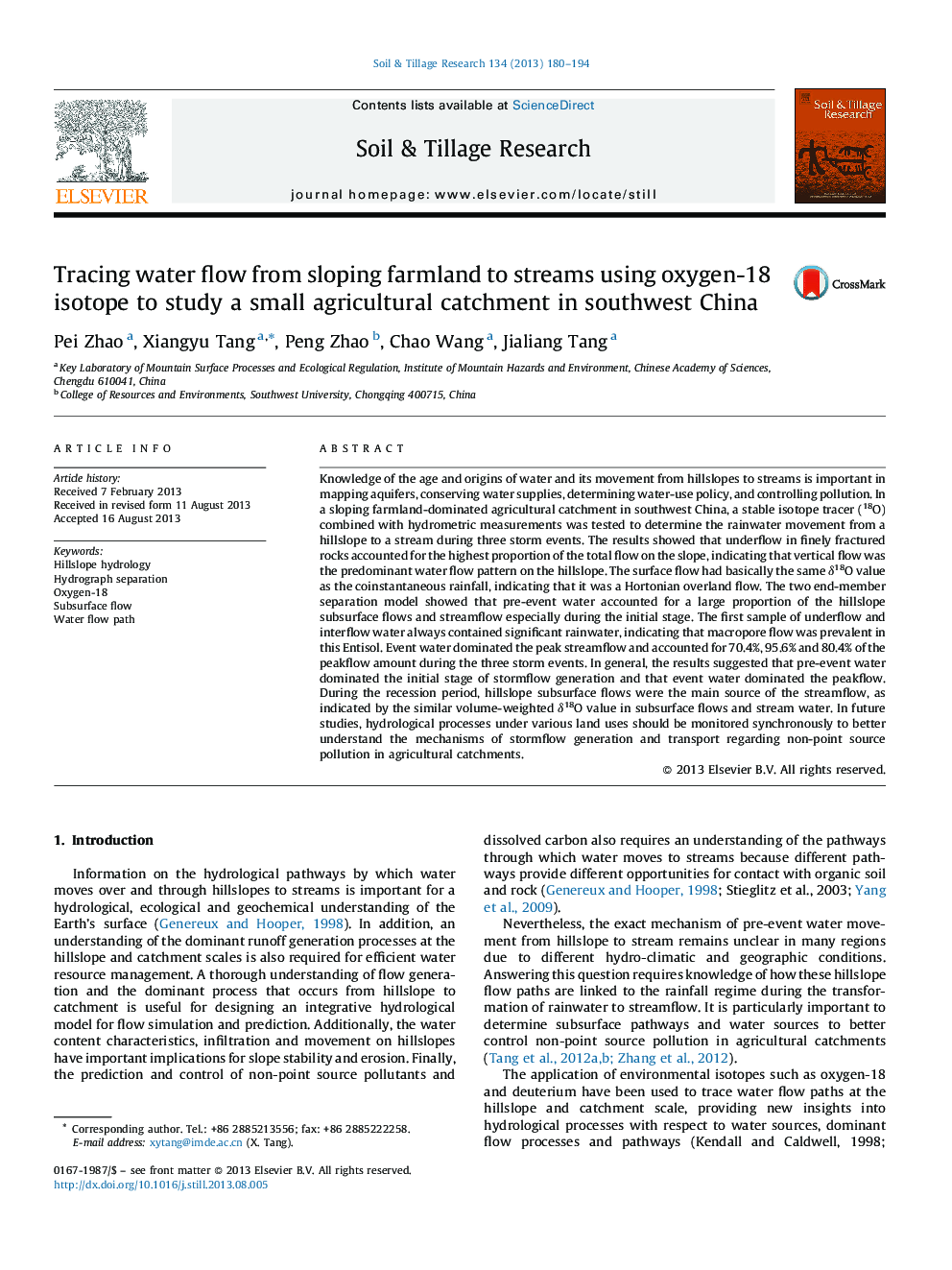| Article ID | Journal | Published Year | Pages | File Type |
|---|---|---|---|---|
| 305814 | Soil and Tillage Research | 2013 | 15 Pages |
•Water mainly moves vertically in the Entisol indicated by underflow amount.•The first subsurface flow water contained much rainwater.•Pre-event water dominated the initial stage of streamflow.•Rainwater dominated the peakflow of stream water in agricultural catchment.•Hillslope subsurface flow dominated the recession process of streamflow.
Knowledge of the age and origins of water and its movement from hillslopes to streams is important in mapping aquifers, conserving water supplies, determining water-use policy, and controlling pollution. In a sloping farmland-dominated agricultural catchment in southwest China, a stable isotope tracer (18O) combined with hydrometric measurements was tested to determine the rainwater movement from a hillslope to a stream during three storm events. The results showed that underflow in finely fractured rocks accounted for the highest proportion of the total flow on the slope, indicating that vertical flow was the predominant water flow pattern on the hillslope. The surface flow had basically the same δ18O value as the coinstantaneous rainfall, indicating that it was a Hortonian overland flow. The two end-member separation model showed that pre-event water accounted for a large proportion of the hillslope subsurface flows and streamflow especially during the initial stage. The first sample of underflow and interflow water always contained significant rainwater, indicating that macropore flow was prevalent in this Entisol. Event water dominated the peak streamflow and accounted for 70.4%, 95.6% and 80.4% of the peakflow amount during the three storm events. In general, the results suggested that pre-event water dominated the initial stage of stormflow generation and that event water dominated the peakflow. During the recession period, hillslope subsurface flows were the main source of the streamflow, as indicated by the similar volume-weighted δ18O value in subsurface flows and stream water. In future studies, hydrological processes under various land uses should be monitored synchronously to better understand the mechanisms of stormflow generation and transport regarding non-point source pollution in agricultural catchments.
